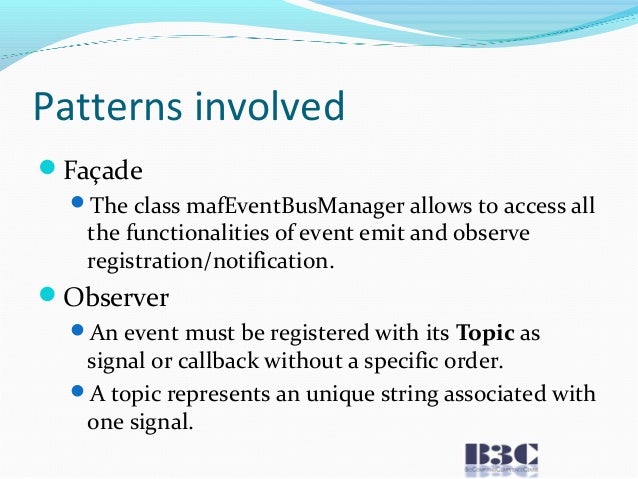Qt Signal Slot Order
- Qt Signal Slot Call Order
- Qt Signal Slot Execution Order
- Qt Signal Slot Orders
- Qt Signal Slot Ordered
- Qt Signal Slot Ordering
Exercise 13: Qt Signals and Slots¶ GitHub Invitation URL: exercise13. Steps: Clone the assignment for today after accepting the GitHub invitation at the link above. The repository contains four files: trafficlight.h defines a Qt widget that uses three radio buttons to simulate a traffic light. Trafficlight.cpp is the implementation of the.
- PyQt Tutorial
- PyQt Useful Resources
- Connecting in Qt 5. There are several ways to connect a signal in Qt 5. Qt 5 continues to support the old string-based syntax for connecting signals and slots defined in a QObject or any class that inherits from QObject (including QWidget).
- QtCore.QObject.connect(widget, QtCore.SIGNAL(‘signalname’), slotfunction) A more convenient way to call a slotfunction, when a signal is emitted by a widget is as follows − widget.signal.connect(slotfunction) Suppose if a function is to be called when a button is clicked. Here, the clicked signal is to be connected to a callable function.
- Selected Reading
Unlike a console mode application, which is executed in a sequential manner, a GUI based application is event driven. Functions or methods are executed in response to user’s actions like clicking on a button, selecting an item from a collection or a mouse click etc., called events.
Qt Signal Slot Call Order

Widgets used to build the GUI interface act as the source of such events. Each PyQt widget, which is derived from QObject class, is designed to emit ‘signal’ in response to one or more events. The signal on its own does not perform any action. Instead, it is ‘connected’ to a ‘slot’. The slot can be any callable Python function.
In PyQt, connection between a signal and a slot can be achieved in different ways. Following are most commonly used techniques −
A more convenient way to call a slot_function, when a signal is emitted by a widget is as follows −
Suppose if a function is to be called when a button is clicked. Here, the clicked signal is to be connected to a callable function. It can be achieved in any of the following two techniques −
or
Example

In the following example, two QPushButton objects (b1 and b2) are added in QDialog window. We want to call functions b1_clicked() and b2_clicked() on clicking b1 and b2 respectively.
When b1 is clicked, the clicked() signal is connected to b1_clicked() function
When b2 is clicked, the clicked() signal is connected to b2_clicked() function
Example
Qt Signal Slot Execution Order
The above code produces the following output −
Output
Qt Signal Slot Orders
Today we will learn about a variation of the Observer design patternthat is used prominently within Qt, called signals and slots.
- Observer and Publish/Subscribe Pattern
- Observers as callback functions
- Observers using signals
- Qt signals
- Examples
- Exercise
GitHub Invitation URL:exercise13
Steps:

- Clone the assignment for today after accepting the GitHubinvitation at the link above. The repository contains four files:
Qt Signal Slot Ordered
- traffic_light.h defines a Qt widget that uses three radio buttons tosimulate a traffic light.
- traffic_light.cpp is the implementation of the traffic light
- main.ccp sets up the application and starts the event loop
- CMakeLists.txt is the build configuration for the example
Qt Signal Slot Ordering
- Add code to the TrafficLight class to add a slot called
toggletochange the light currently lit. The sequence should gored->green->yellow->red repeating after that. You will need to addsome internal members to the TrafficLight class to accomplish this. - Read the documentation forQTimer and, in the mainfunction of
main.cpp, add code to setup and start a timer thatgoes off every one second, resulting in the traffic light beingtoggled. This will require connecting a signal from the timer to theslot implemented in step 2. - Build and run your application. Does the light change in the correctsequence?
- Now, use git to commit the source files changed to the localrepository.
- Use git push to synchronize the repository with that onGitHub.
- Finally, post the screenshot of output of your program to Canvas.
You have completed the Exercise.